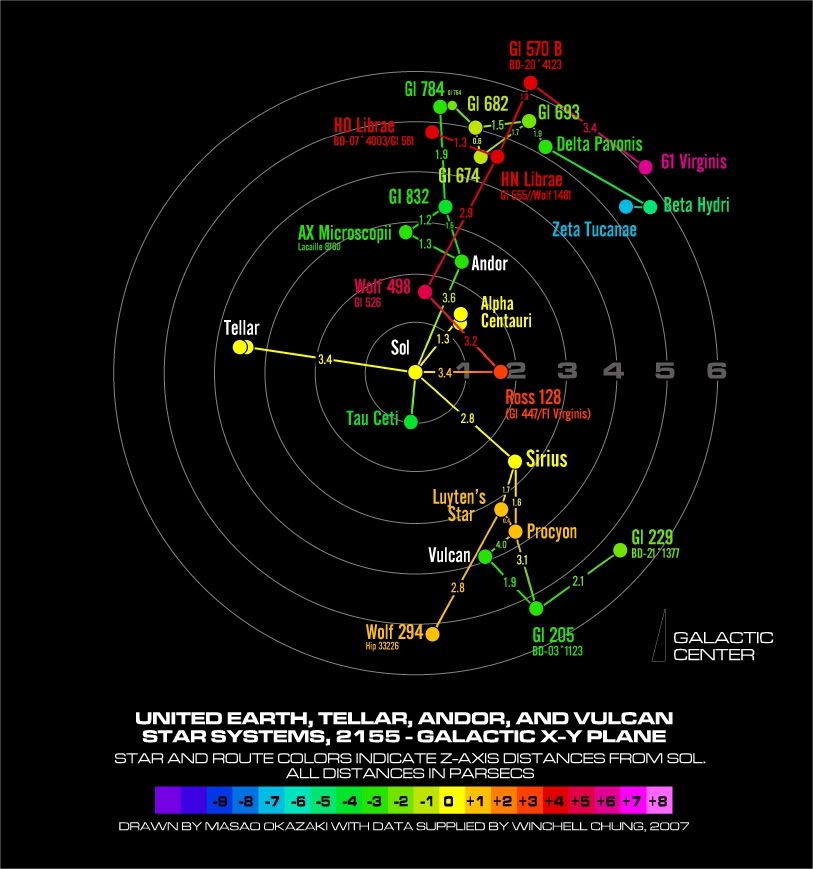I work with 3D modeling programs all the time. I have no problem interpreting odd three dimensional shapes and positions while working with them on my 2D computer monitor - no hologram needed.
I think most of us can say that. Most photographs, blueprints, sketches and paintings of real-world objects are 2D renditions of 3D things.
Having said that, a single 2D star map can still be misleading. Imagine a star map with just three stars:
First, the obvious -- I think we can all agree that it's unlikely that the three stars occupy the same "vertical plane" if being viewed from an arbitrary angle. If this is the only information that we're given, then how useful is the star map? Which two stars are closest together? We don't know. Which two stars are the farthest part? We don't know.
Now assume we know that delta Burke and gamma Rae both lie within Federation space. Does beta Carotene lie within Federation space? We don't know. It might be in Klingon space. This might seem wrong, though -- after all, beta Carotene is between the other two stars -- or is it? We don't know.
To people who don't know better, (1) beta Carotene lies between delta Burke and gamma Rae, (2) if delta Burke and gamma Rae lie within Federation space, then beta Carotene likely does, too, and (3) delta Burke and beta Carotene are the two stars which are closest together.
To people who do know better, the above three observations might be made on an instinctive level based on what we see in the diagram. Of course, those assumptions might all turn out to be false. Either way, to people who do know better, how useful is the diagram by itself? I would argue that it has little value -- unless it can in fact be rotated, etc., as you've suggested.



